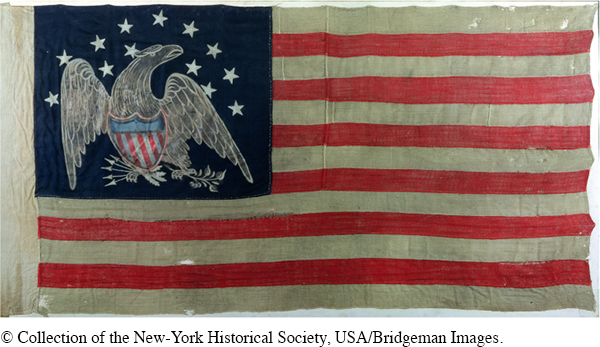Confederation and Taxation
Only after declaring independence did the Continental Congress turn its attention to creating a written document that would specify what powers the congress had and by what authority it existed. There was widespread agreement on key government powers: pursuing war and peace, conducting foreign relations, regulating trade, and running a postal service. Because the congress’s attention was fixed on the war, it took another year of tinkering to reach agreement on the Articles of Confederation, defining the union as a loose confederation of states existing mainly to foster a common defense. Much like the existing Continental Congress, there was no national executive (that is, no president) and no judiciary. The congress, consisting of delegates selected annually by their state legislatures, was the sole governing agency.
Delegates faced term limits of three years, to ensure rotation in office. Anywhere from two to seven delegates could represent each state, with each delegation casting a single vote. Routine decisions required a simple majority of seven states, whereas momentous decisions, such as declaring war, required nine. To approve or amend the Articles required the unanimous consent both of the thirteen state delegations and of the thirteen state legislatures—giving any state a crippling veto power. Most crucially, the Articles gave the national government no power of direct taxation.
> UNDERSTAND
POINTS OF VIEW
Why was the issue of western land so important to Delaware and Maryland that their delegates refused to sign the Articles of Confederation?
Yet taxation was a necessity since all governments require money. To finance the Revolutionary War, the confederation congress issued interest-bearing bonds purchased by French and Dutch bankers as well as middling to wealthy Americans, and revenue was necessary to repay these loans. Other routine government functions required money: Trade regulation required salaried customs officers; a postal system required postmen, horses and wagons, and well-maintained postal roads; the western lands required surveyors; and Indian diplomacy (or war) added further large costs. Article 8 of the confederation document declared that taxes were needed to support “the common defence or general welfare” of the country, yet the congress also had to be sensitive to the rhetoric of the Revolution, which denounced taxation by a nonrepresentative power. [[LP PHOTO: P08.02 Revolutionary War Flag Used on a Naval Ship/

The Articles of Confederation posed a delicate two-step solution. The congress would requisition (that is, request) money to be paid into the common treasury, and each state legislature would then levy taxes within its borders to pay the requisition. The Articles called for state contributions assessed in proportion to the improved property value of the state’s land, so that populous states paid more than did sparsely populated states. Requiring that the actual tax bill be passed by the state legislatures preserved the Revolution’s principle of taxation only by direct representation. However, no mechanism compelled states to pay.
The lack of authority in the confederation government was exactly what many state leaders wanted in the late 1770s. A league of states with rotating personnel, no executive branch, no power of direct taxation, and a requirement of unanimity for any major change seemed to be a good way to keep government in check. The catch was that ratification itself required unanimous agreement, and that proved difficult to secure.
Understanding the American Promise 3ePrinted Page 199
Section Chronology